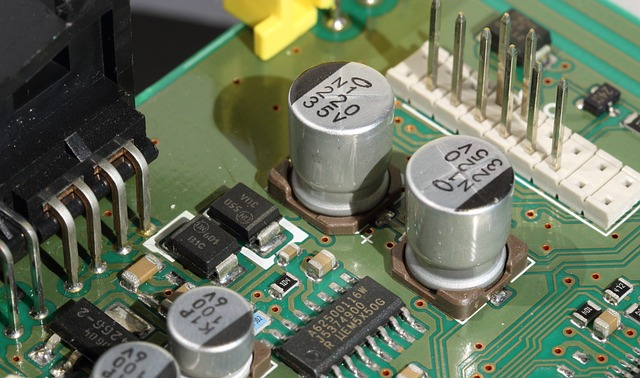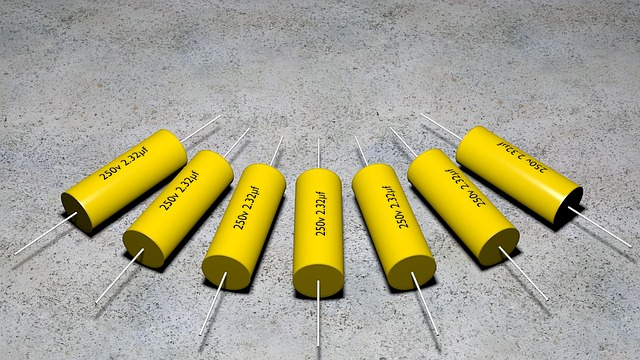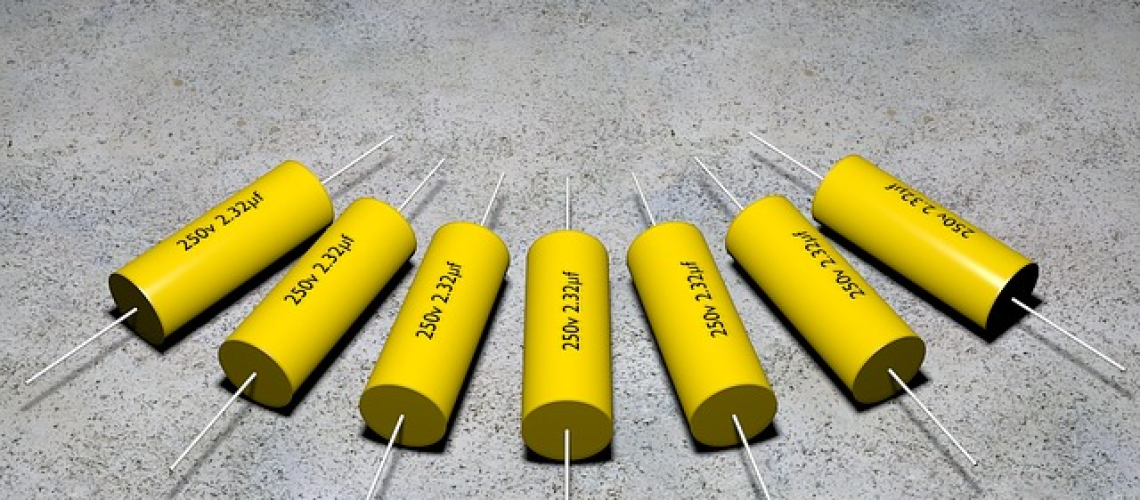Meta Description
Discover everything you need to know about electrolytic capacitors in this ultimate guide. Learn about their types, uses, benefits, and troubleshooting tips. Perfect for hobbyists and professionals alike.
Introduction
Electrolytic capacitors are a type of capacitor that uses an electrolyte to achieve a larger capacitance than a similarly sized non-electrolytic capacitor.
Electrolytic capacitors are essential in many electronic devices, from power supplies to audio amplifiers. Their ability to store and release electrical charge makes them a valuable asset in electronics design, and they come in various types and sizes to fit different applications.
Understanding electrolytic capacitors and their uses is essential for anyone working with electronic circuits. This guide will provide an in-depth look at electrolytic capacitors, including their working, types, benefits, and troubleshooting tips.
High capacitance-to-volume ratio
One of the critical advantages of electrolytic capacitors is their high capacitance-to-volume ratio, which means they can provide a large capacitance in a relatively small package. However, they are also prone to electrolyte leakage and failure due to high temperature, high voltage, and reverse voltage.
It is essential to select electrolytic capacitors with appropriate voltage and temperature ratings for the intended application and to observe the manufacturer’s recommended operating conditions to help mitigate the risks of failure.
Key Benefits of Electrolytic Capacitors
When designing a circuit board, choosing the appropriate type of capacitor, such as ceramic capacitors, film capacitors, or electrolytic capacitors with a suitable dielectric material to ensure a stable power supply, is essential. We also have to ensure it has the feature to be a decoupling capacitor. There are several critical benefits to choosing electrolytic capacitors for your circuit, including:
High capacitance:
Electrolytic capacitors have a high capacitance-to-volume ratio, which means they can provide a large capacitance in a compact package.
Low cost:
Compared to other capacitors with similar capacitance ratings, electrolytic capacitors are generally less expensive.
High voltage rating:
Electrolytic capacitors can typically handle high voltage levels, making them suitable for power supply circuits.
Low ESR:
Electrolytic capacitors typically have a low equivalent series resistance (ESR), which means they can provide a downward impedance path for high-frequency currents.
Long lifespan:
When used within their specified parameters, electrolytic capacitors can have a long lifespan, making them a reliable choice for many applications.
Overall, electrolytic capacitors are a versatile and cost-effective solution for many electronic circuits requiring high capacitance in a compact package.

Working of Electrolytic Capacitors
Electrolytic capacitors use an electrolyte to form a dielectric layer between the capacitor’s electrodes. The dielectric layer separates the positive and negative electrodes and stores electrical charge, allowing the capacitor to store and release energy.
In an aluminum electrolytic capacitor, the anode is made of a thin aluminum foil with a roughened surface to increase the surface area. The foil is then dipped into an electrolyte solution containing boric acid and ethylene glycol, and a layer of aluminum oxide is formed on the surface of the anode by applying a voltage to the capacitor.
The aluminum oxide layer of the film capacitor acts as the dielectric, and the cathode is made of a conductive material such as carbon or metallic oxide. Electrons flow from ceramic dielectric to the cathode to the anode whenever the voltage is applied, building up an electrical charge on the oxide layer. This charge is stored in the capacitor until it is discharged.
In a tantalum electrolytic capacitor, the anode is made of a tantalum metal coated with a thin layer of tantalum pentoxide. The pentoxide layer acts as the dielectric, and the cathode is made of a conductive material such as carbon or metallic oxide.
When a voltage is applied to the tantalum electrolytic capacitor, electrons flow from the cathode to the anode, building up an electrical charge on the pentoxide layer. This charge is stored in the capacitor until it is discharged.
Overall, electrolytic capacitors use an electrolyte and a dielectric layer to store and release electrical charge, allowing them to perform various functions in electronic circuits for energy storage.

Types of Electrolytic Capacitors
There are several electrolytic capacitors, each with its characteristics and applications. The main capacitor types used include:
Aluminum electrolytic capacitors:
These are the most common type of electrolytic capacitors, and they are available in a wide range of capacitance and voltage ratings.
These are commonly used in power supply circuits, audio amplifiers, and other applications requiring dc voltage and a large capacitance in a compact package. They are also used in motor starting and running circuits, lighting ballasts, and other applications requiring high voltage and high capacitance values.
Tantalum electrolytic capacitors
These capacitors use a tantalum metal anode and a tantalum pentoxide dielectric, which provides a high capacitance-to-volume ratio and low leakage current.
These capacitors are often used in portable electronics, such as smartphones, tablets, and laptops, where space is at a premium. They are also used in aerospace and military applications due to their high reliability and ability to withstand harsh environments.
Niobium electrolytic capacitors
Like tantalum electrolytic capacitors, niobium electrolytic capacitors use a niobium metal anode and a niobium oxide dielectric. They offer similar performance characteristics to tantalum capacitors but at a lower cost.
These capacitors are used in similar applications to tantalum electrolytic capacitors but are lower in cost. They are often used in power supplies, automotive electronics, and other applications where a low ESR and high reliability are essential.
Solid electrolytic capacitors
These capacitors use a solid conductive polymer as the electrolyte, providing high capacitance and low ESR. These capacitors are commonly used in high-speed digital circuits, such as computers, telecommunication equipment, and other applications where low ESR and low ESL (Equivalent Series Inductance) is essential.
Hybrid electrolytic capacitors
These capacitors combine the advantages of different electrolytic capacitors, such as the high capacitance of aluminum electrolytic capacitors and the low ESR of solid electrolytic capacitors.
These capacitors are used in various applications, including power supplies, DC-DC converters, and other electronic circuits. They are essential in applications with high ripple current and low ESR, such as voltage regulators and power amplifiers.
Choosing the Right Type of Electrolytic Capacitor for Your Project
Choosing the correct type of electrolytic capacitor for your project depends on several factors, including the required capacitor’s capacitance amount, voltage rating, ESR, and operating temperature range. Here are some considerations when selecting an electrolytic capacitor:
Capacitance
The first consideration is the required capacitance value for your application. Aluminum electrolytic capacitors typically have a capacitance range of 1µF to several thousand µF, while tantalum electrolytic capacitors usually range in capacitance values from 0.1µF to several hundred µF.
Voltage Rating
The next consideration is the required voltage rating for the capacitor. Ensure that the selected capacitor has a voltage rating higher than the maximum voltage applied across the capacitor in your circuit.
ESR
The Equivalent Series Resistance (ESR) is an important parameter when selecting an electrolytic capacitor. Low ESR is desirable in circuits with essential high-frequency performance, such as switching power supplies.
Operating Temperature
The operating temperature range of the capacitor is an important consideration, primarily if the circuit operates in harsh environments or at high temperatures. Ensure that the selected capacitor can work within the required temperature range for your application.
Size and Form Factor
The size and form factor of the capacitor is essential considerations if space is a constraint. Tantalum electrolytic capacitors are typically smaller than aluminum ones and can be used when space is at a premium.
Cost
Finally, the cost is essential when selecting an electrolytic capacitor. The cost depends on the type of capacitor and the required capacitance and voltage rating of variable capacitor.
You can select the correct type of electrolytic capacitor for your project and filter capacitor that meets the specific requirements of your application by considering these factors.
Troubleshooting Common Problems with Electrolytic Capacitors
Electrolytic capacitors are prone to inevitable failures that can cause problems in electronic circuits. Here are some common issues that can occur with electrolytic capacitors and some tips on how to troubleshoot them:
Capacitor Leakage
Leakage is a common problem with electrolytic capacitors. When a capacitor leaks, the electrolyte can damage the PCB and other components or even cause the capacitor to explode. To identify a leaky capacitor, look for signs of electrolyte on or around the capacitor. If you find a leaky capacitor, replace it immediately with a new one.
Capacitor Bulging
Bulging is another common problem with electrolytic capacitors. Over time, the electrolyte inside the ceramic capacitor itself can dry out or evaporate, causing the capacitor to bulge. This can cause the capacitor to fail or even explode. If you notice a bulging capacitor, replace it immediately with a new one.
Capacitor ESR
High Equivalent Series Resistance (ESR) is another common problem with electrolytic capacitors. High ESR can cause a circuit to malfunction, especially in high-frequency circuits. To test for high ESR, use a capacitance meter or an ESR meter to measure the ESR of the capacitor. If the ESR is high, replace the capacitor with a new one.
Capacitor Short Circuit
A short circuit in a capacitor can cause a circuit to malfunction or even damage other electrical components within. To test for a short circuit, use a multimeter to measure the resistance across the terminals of the capacitor. If the resistance is low, the capacitor has a short circuit and should be replaced. tantalum capacitor0/2–7
Aging
Electrolytic capacitors have a limited lifespan, and their performance can deteriorate over time. If you notice that a capacitor is not performing as well as it used to, it may be time to replace it with a new one.
In summary, troubleshooting common problems with electrolytic capacitors involves identifying the problem, testing the capacitor, and replacing it with a new one if necessary. Handling electrolytic capacitors carefully and following proper safety procedures when working with them to avoid damage or injury is essential.
Tips for Proper Maintenance of Electrolytic Capacitors
Proper maintenance of electrolytic capacitors can extend their lifespan and prevent problems from occurring. Here are some tips for good care and appropriate care of capacitors:
Store capacitors properly
Store electrolytic capacitors in a cool, dry place away from direct sunlight and high humidity. Heat, moisture, or sunlight exposure can damage the capacitor and reduce lifespan.
Avoid overvoltage
Avoid applying a voltage higher than the capacitor’s rated voltage. Overvoltage can cause the capacitor to fail or even explode.
Monitor operating temperature
Monitor the capacitor’s operating temperature, and ensure it operates within the specified temperature range. Excessive heat can cause the capacitor to bulge or leak, while extreme cold can affect its performance.
Check for signs of damage.
Regularly inspect electrolytic capacitors for signs of damage, such as bulging, leaking, or discoloration. If you notice any signs of damage, replace the capacitor immediately.
Replace old capacitors
Replace old or aging capacitors with new ones. Electrolytic capacitors have a limited lifespan and may not perform as well as age. In general, it is recommended to replace electrolytic capacitors every 10 years.
Use appropriate capacitors
Use the appropriate type and specification of electrolytic capacitor for your circuit. Choosing the wrong kind or specification can cause problems, including decreased performance or even damage to the circuit.
By following these tips, you can help to ensure the proper maintenance of your electrolytic capacitors and prevent problems from occurring. It’s also essential to follow reasonable safety procedures when handling electrolytic capacitors, such as discharging them before managing and avoiding contact with the electrolyte.
Frequently Asked Questions
What is the lifespan of electrolytic capacitors?
The lifespan of electrolytic capacitors varies on the quality of the capacitor, the operating conditions, and the frequency of use. Generally, the lifespan of electrolytic capacitors can range from a few years to over a decade.
Which dielectric is used in an electrolytic capacitor?
The dielectric layers in electrolytic capacitors are usually aluminum oxide, formed by anodizing the aluminum electrode. The oxide layer acts as the dielectric, which allows the capacitor to store charge.
What voltage do electrolytic capacitors use?
Electrolytic capacitors are designed to operate at specific voltage ratings ranging from a few volts to several hundred volts. The voltage rating is essential when selecting an electrolytic capacitor for your project.
Can an electrolytic capacitor be used for AC or DC?
Electrolytic capacitors can be used for AC and DC applications, but the polarity must be observed. Electrolytic capacitors are polarised, meaning they have positive and negative terminals. Applying voltage in the wrong polarity can cause the capacitor to fail or explode.
Conclusion
In conclusion, electrolytic capacitors are a vital component in electronics. They are used in various applications, from power supplies to audio amplifiers.
By understanding electrolytic capacitors’ working, types, and benefits, you can choose the suitable capacitor for your project and ensure it operates smoothly.
Remember to follow proper maintenance and safety procedures when working with electrolytic capacitors to ensure their optimal performance and longevity.

